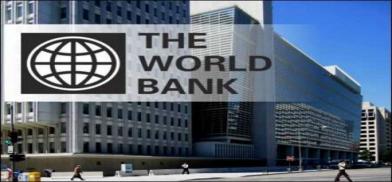Sri Lanka downgraded to World Bank lower-middle-income country as per capita income falls
Sri Lanka has been re-classified as a lower middle-income country by the World Bank as per capita income dropped amid real effective exchange rate and flexible inflation targeting which brought currency collapses and growth rates below inflation

Sri Lanka has been re-classified as a lower middle-income country by the World Bank as per capita income dropped amid real effective exchange rate and flexible inflation targeting which brought currency collapses and growth rates below inflation.
Sri Lanka’s per capita gross national produced (GNP) dropped over 200 dollars from 3,968 dollars in 2018 to 3,741 dollars in 2019, while per capital gross domestic (GDP) product dropped from 4,079 dollars to 3,852 dollars following a currency crisis triggered which brought stagflation.
Monetary Instability
Sri Lanka has been following a combination of Real Effective Exchange Rate (REER) targeting involving deliberate devaluation of the currency run ahead of inflation, generating fresh inflation in the process and ‘flexible’ inflation targeting with consumer price target high enough to trigger involuntary currency collapses.
Monetary instability had worsened in peacetime, with currency crises coming with smaller gaps, compared to the latter part of the island’s long-running civil war with policy becoming more discretionary and pro-cyclical.
In 2018 a pro-cyclical rate cut in April was followed by liquidity injections, which was combined with a so-called buffer strategy for bond sales, involving overdrawing state banks re-financed with the lender of last resort money, just as the credit system was recovering from a 2015/2016 crisis.
Sri Lanka’s per capita GNP also dropped from 3,969 US dollars in 2017 to 3,968 dollars in 2018 following a 2015/2016 currency collapse which was also triggered by pro-cyclical rate cuts and liquidity injections amid a sudden expansion of the budget deficit in 2015.
The last administration gave the central bank full independence to target the REER and also engage in pro-cyclical rate cuts, though there have been calls to reform the central bank, restrain its domestic operations, curb discretionary policy in a bid to bring monetary stability and sustained growth.
In 2020, however, the central bank had come under pressure to print more money, and it has lost forex reserves. But private credit had slowed by April 2020, amid Coronavirus lockdowns. Sweeping import controls have also been brought after money printing.
Adjusted Threshold
The World Bank adjusts per capita Gross National Income using a so-called Atlas Method which seeks to smooth the effects of currency volatility and inflation.
The World Bank calculated Sri Lanka’s gross national income in 2019 to have fallen to 4,020 dollars from 4,060 dollars in 2018, under the Atlas Method.
The lender’s threshold for upper middle-income countries also moved up to 4,026 dollars in 2019 from 3,996 dollars in 2018, which it said was due to inflation of special drawing rights, a composite denominator currency devised by the International Monetary Fund.
The classification is done every year at the beginning of July.
With per capita income rising Sri Lanka graduated out of World Bank’s cheapest loans from the International Development Association window in 2017.








Post a Comment